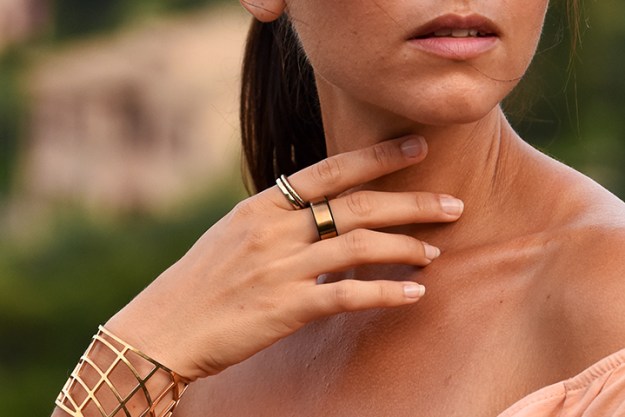Sometimes sticking to the classics is better than trying to follow every trend. Omata (pronounced like “O-meter” with a little British flair) applies this to cycling computers with the Omata One, a next-gen speedometer that looks like a piece of classic kit. This smart speedometer just launched on Kickstarter and people are backing it as fast as a mouse button will click.
To quote Disney, do not be fooled by its commonplace appearance. A closer look at the 5083 Aluminum case and polyether ether ketone (PEEK) bezel reveals that the Omata One is more “elegant” than “common.” This traditional round casing is not merely a reissue of the old gimmicky speedometers that existed before the days of bar-mounted computers. The Omata One is more of a cyclo-computer with an analog display than a simple speedometer.
Within this timeless piece hides smart guts developed with Seiko: an incredibly accurate GPS and USB Type-C connection for data transfer and charging. The 72-channel GPS handles not only speed but route tracking: the Omata One looks like a simple speedometer, but it runs on a saves your speed and location data, lasting 24 hours on a charge. You can upload your ride to Strava or other trackers that accept GPX format data.
The analog dials of the Omata One are designed to take advantage of our natural inclinations and visual perception. Omata developed its own bespoke set of numerals for the display, called Omata Numeral Regular. It’s open and clear, yet subtly modern. It’s not a Rothman font from the 1960’s, but it still has a timeless feel and a rider can see all he or she needs at a glance.
Distance is handled by the outer ring; vertical ascent is on the left interior dial, clock and ride time on the right interior dial, and speed on the main dial at the forefront, of course. When at a stop, it shows speed average and the total trip time. By the way — the max speed is 65 mph, not 100, but you won’t need to worry about that unless you’re going to a world speed record.
Purists — this writer knows a few — turn up their nose at strapping a massive smartphone-like contraption (or God forbid, a smartphone itself) to the bars of their several-thousand-dollar steed. Rhys Newman, one of the founders of Omata, said in the video, “Everything on your bike should be as pure and beautiful as the ride itself.”
People must agree as the 200 limited edition Omata One backer rewards are already all gone. World champion pro-cyclist Fabian Canellara agrees; he’s Omata’s brand ambassador and chief tester. “This is for the people that just love riding the bike, and that’s what I also like,” he said. 2016 will be Cancellara’s last racing season. “I did 16 years professional and honestly, I want to enjoy my rides.”
Hence the Omata One’s design. “It has all the technology you could want, but it doesn’t need to show those things all the time.” That’s kind of true. As much as this writer personally loves the concept and execution, there are a few things the Omata One doesn’t do. At $499 pre-sale, a price comparable to the shiniest top-of-the-line cycling computer, it’s worth addressing what backers are giving up:
Put all that fancy stuff like theft monitoring an haptic feedback out of your mind. The Omata One doesn’t even show turn by turn directions or maps — obviously — so no following downloaded routes. Further, most committed enough to the sport to drop that amount of cash are looking for heart rate, cadence, and power output monitoring as well, which is not included at this point. One comment pointed out the device should be able to do this while sticking with the “less is more” philosophy by simply recording the data and instead of displaying it. According Omata’s Kickstarter comment, BTLE and ANT+ are engineered into the core engine, so that a future Omata speedometer “e.g., a Training Edition” could pair with sensors. The post concluded “We’ve had to make hard choices in order not to pile on an excess of features for Omata One.” Hey, this writer agrees, but those hard choices are hard to swallow at $499.
Omata’s Kickstarter campaign is less than $10,000 away from the $150,000 goal at the time of this writing. The company plans to deliver the first speedometers in February 2017. The projected retail after the campaign ends May 5 is a whopping $600, so if you want a One, get in on the ground floor.


